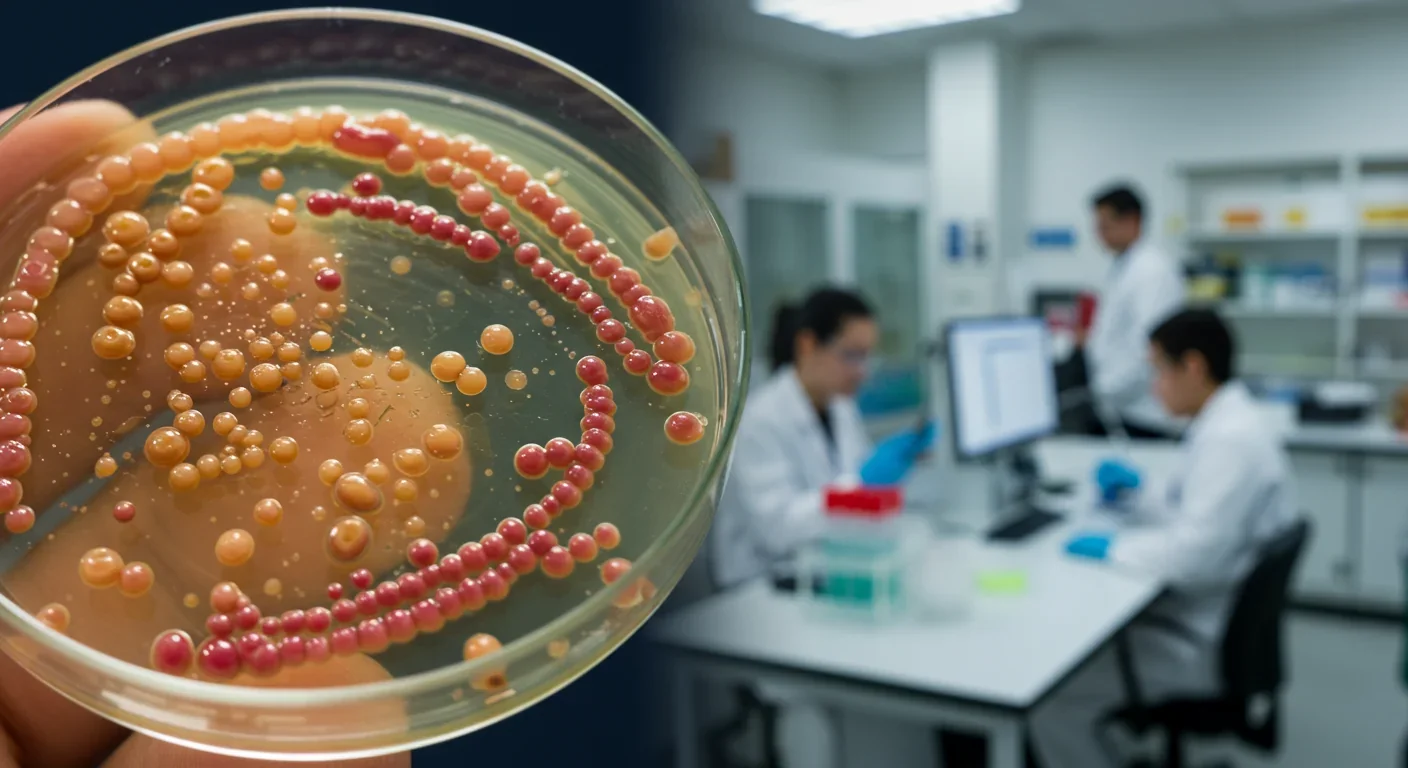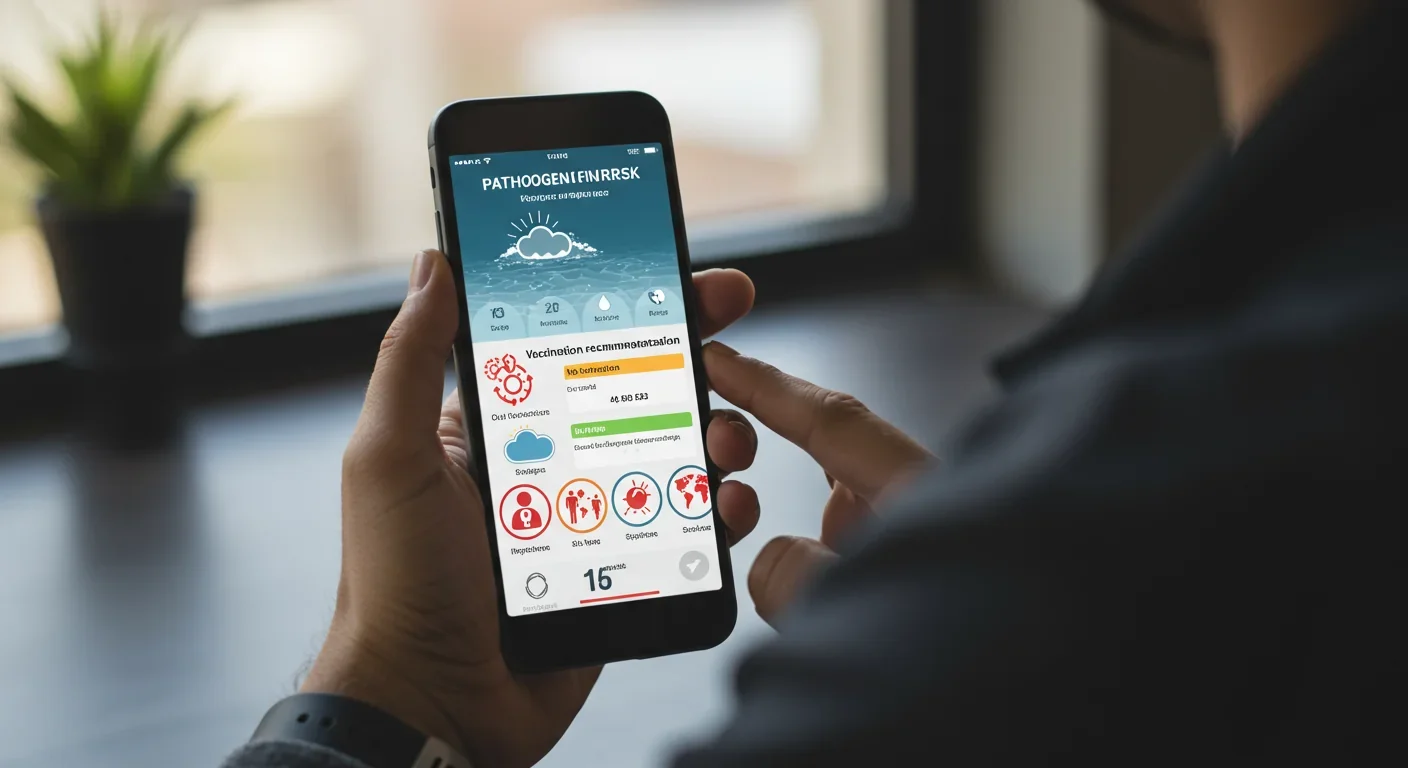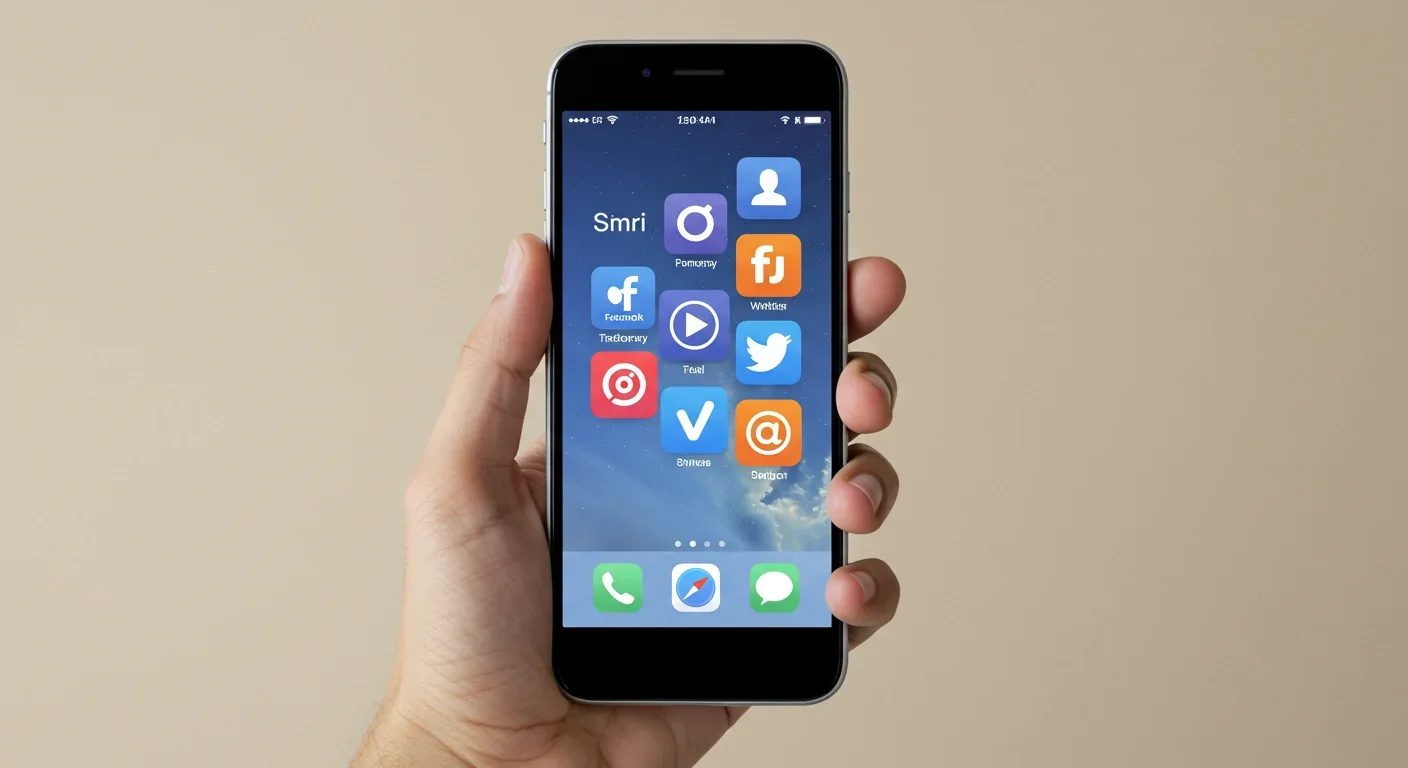Keystone Bacteria: The Missing Link in Your Gut Health

TL;DR: Scientists are building AI-powered genomic weather forecast systems that track pathogen mutations in real-time to predict disease outbreaks before they happen, transforming pandemic response from reactive to proactive.

By 2030, public health officials might check a "disease forecast" each morning, the same way you check if it'll rain today. That forecast won't predict thunderstorms or heatwaves. It'll tell them which virus is about to surge, where antibiotic-resistant bacteria are evolving, and whether a new pandemic is gathering strength somewhere on the planet.
This isn't science fiction. Scientists are building what they call a "genomic weather forecast" system, using artificial intelligence to track how pathogens mutate in real-time and predict their next moves. Just like meteorologists analyze atmospheric patterns to forecast storms, these researchers are analyzing genetic patterns to forecast outbreaks.
The core breakthrough? AI can now read millions of viral genomes, spot dangerous mutation patterns, and predict which strains will dominate months before they cause widespread illness. During COVID-19, this technology helped track emerging variants. Now, it's expanding to influenza, antibiotic-resistant bacteria, and potentially any pathogen that threatens human health.
Viruses and bacteria evolve constantly, but they don't evolve randomly. They're responding to evolutionary pressures: our immune systems, vaccines, antibiotics, and environmental conditions. These pressures create patterns, and patterns can be predicted.
Think of it like this: if you're a virus trying to infect vaccinated people, you need mutations that help you escape vaccine-generated antibodies. Not every mutation works. Most are useless or even harmful to the virus. But occasionally, a mutation hits the jackpot, allowing the pathogen to spread more efficiently or evade our defenses.
Machine learning algorithms excel at finding these "jackpot" patterns in vast datasets. One research team analyzed over 7.3 million SARS-CoV-2 sequences and achieved precision scores above 0.95 in predicting which mutations would increase infectivity. They identified specific amino acid changes, like N437R, that doubled viral entry into cells, long before these mutations became widespread.
The mechanics are surprisingly similar to how AI learns to recognize faces or predict stock prices. You feed the algorithm massive amounts of historical data, in this case millions of pathogen genomes paired with information about how infectious or dangerous each variant was. The AI learns which genetic signatures correlate with increased threat, then applies those lessons to newly sequenced pathogens.
But here's where it gets interesting: language models, the same technology behind ChatGPT, are being repurposed to "read" genomic sequences. Viral genomes are essentially text strings written in a four-letter alphabet (A, T, C, G for DNA; A, U, C, G for RNA). Language models trained on these sequences can learn the "grammar" of pathogen evolution, predicting which mutations are likely to appear next based on patterns in previous variants.
The U.S. Centers for Disease Control and Prevention already uses a form of genomic forecasting called "Nowcast estimates." When tracking COVID-19 variants, the CDC faces a timing problem: collecting samples, sequencing them, and analyzing the data takes weeks. By the time they know which variants dominated last month, the situation has already changed.
So they built a model that projects variant proportions for the most recent period before the data arrives. It's a predictive placeholder that lets public health officials respond to emerging threats faster than raw data alone would allow.
This approach has broader implications. Nowcast estimates demonstrate that we don't need perfect information to make informed decisions. A reasonably accurate prediction available today is often more valuable than a perfect dataset available three weeks from now. During an outbreak, those three weeks could mean thousands of additional cases.
The CDC's genomic surveillance system receives specimens for genetic sequencing, uploads results to public databases, and combines this data with epidemiological information to track variants that might affect vaccine efficacy, transmission, or disease severity. This integration of sequencing data, modeling, and public health response represents an early version of the genomic weather forecast concept.
Influenza has plagued forecasters for decades. Each year, the World Health Organization convenes experts to predict which flu strains will dominate the coming season, so vaccine manufacturers know what to include in the shot. They're often wrong. Flu viruses mutate rapidly, and by the time vaccines reach clinics, the targeted strains may have evolved or been replaced by different ones entirely.
MIT researchers recently developed an AI tool that predicts flu vaccine strains more accurately than traditional WHO methods. Their model analyzes the genetic sequences of circulating flu viruses and forecasts which ones will dominate the next season based on evolutionary fitness indicators.
Early results are striking. The AI model's predictions aligned better with actual flu seasons than expert committee selections did. This matters because even small improvements in vaccine matching can prevent thousands of hospitalizations and deaths. If an AI system consistently makes better predictions, it could guide vaccine formulation, saving lives and billions in healthcare costs.
The broader lesson: human expertise combined with machine pattern recognition outperforms either alone. Flu experts understand viral biology, immune responses, and global surveillance infrastructure. AI systems process millions of genetic sequences and spot subtle evolutionary trends humans would miss. Together, they create a more powerful forecasting system.

Bacterial evolution poses a different challenge. Unlike viruses, bacteria can share resistance genes horizontally, swapping genetic material even between different species. This makes their evolution less predictable but also more urgent. When bacteria acquire resistance to multiple antibiotics, they become "superbugs" that our best medicines can't stop.
Genomic surveillance of antibiotic resistance uses whole-genome and metagenome sequencing to identify resistance genes before they spread widely. Researchers can now screen bacterial populations for emerging resistance patterns and predict which gene combinations will create the most dangerous superbugs.
The CDC established the Global Antimicrobial Resistance Laboratory and Response Network to coordinate this surveillance internationally. When unusual resistance patterns appear in one hospital, the network can quickly determine whether it's an isolated case or part of a broader trend.
One recent study achieved real-time genomic surveillance in healthcare settings, detecting outbreaks faster and reducing their clinical and economic impact. The system identified resistance clusters within hours instead of days, allowing infection control teams to intervene before superbugs spread through entire facilities.
But bacterial surveillance faces a fundamental challenge: bacteria outnumber us by trillions to one, and they live everywhere on Earth. Comprehensive surveillance would require sequencing capacity we don't yet have. Current systems focus on high-risk settings like hospitals and farms, creating gaps where resistance can evolve undetected.
Building a global genomic weather forecast requires more than clever algorithms. It needs a massive data infrastructure that most countries don't have.
First, you need widespread sequencing capacity. The COVID-19 pandemic drove unprecedented investment in genomic surveillance, with countries establishing sequencing labs and data-sharing networks at record speed. This infrastructure remains in place, though funding varies widely by nation.
Second, you need fast, affordable sequencing technology. Nanopore and Illumina platforms now enable real-time pathogen sequencing in hospitals and field settings, but these tools remain expensive and require trained personnel. Low-income countries often lack both.
Third, you need data sharing. International networks like the WHO's International Pathogen Surveillance Network are working to connect labs globally, but political tensions, intellectual property concerns, and privacy issues complicate data exchange. Some countries worry that sharing pathogen sequences could lead to bioweapon development or enable competitors to develop vaccines and treatments first.
Fourth, you need computational infrastructure. Visualization and analysis tools like Nextstrain allow researchers to track pathogen evolution spatially and temporally, but running AI models on millions of genomes requires substantial computing power. Cloud-based platforms like AIVE (Artificial Intelligence for Viral Evolution) democratize access by providing free, web-based analysis that doesn't require users to have powerful computers, but they depend on sustained funding and maintenance.
The COVID-19 pandemic generated more pathogen sequence data in two years than had been collected for all other pathogens in history. That data deluge created both opportunities and challenges.
On one hand, AI thrives on large datasets. More sequences mean better pattern recognition and more accurate predictions. On the other hand, vast amounts of data require sophisticated filtering and quality control. Not all sequences are equally useful; errors in sequencing or metadata can mislead algorithms.
Researchers at Northeastern University are developing AI tools specifically designed to predict epidemics from noisy, incomplete data. Their models account for surveillance biases, such as the fact that wealthy countries sequence more pathogens than poor ones, creating a geographic blind spot in global forecasting.
These tools also integrate multiple data streams: genomic sequences, case counts, mobility patterns, climate data, and social media trends. By combining diverse information sources, AI systems build a more complete picture of outbreak risk. For example, increased Google searches for "flu symptoms" in a region, combined with detection of novel flu mutations in local samples, might trigger an early warning.
But turning predictions into public health action remains complicated. False alarms erode trust and waste resources. Missed warnings cost lives. Calibrating the sensitivity of early warning systems requires careful balancing, and different stakeholders have different risk tolerances. Should we trigger lockdowns based on AI predictions? Issue travel warnings? Accelerate vaccine production?
Genomic weather forecasts raise thorny ethical questions. If AI predicts that a dangerous pathogen variant will emerge in a specific region, should that information be public? Making it public could help those regions prepare, but it might also trigger panic, stigmatization, or economic damage.
Consider a scenario: AI forecasts that a novel flu variant with pandemic potential will likely emerge in Southeast Asia within six months. Publishing that prediction could prompt vaccine stockpiling in wealthy nations, leaving the predicted origin region undersupplied. It could discourage travel and trade with Southeast Asian countries, harming their economies while the threat remains hypothetical.
There's also the dual-use dilemma. The same tools that predict dangerous mutations could guide bad actors trying to engineer them. Research on pathogen evolution walks a fine line between advancing public health and providing blueprints for biological weapons.
Privacy concerns add another layer. Pathogen genomes sometimes contain information about human hosts: where they live, their travel history, possibly even genetic markers. Sequencing wastewater to track community spread of disease is effective surveillance, but it raises questions about consent and anonymity.
And then there's equity. If wealthy nations and institutions control the AI systems that predict outbreaks, they'll have first access to warnings and better preparation. Unless genomic weather forecasts are treated as a global public good, they could widen existing health disparities.

Despite the challenges, genomic forecasting has already proven its value. During the COVID-19 pandemic, real-time tracking of variants like Alpha, Delta, and Omicron helped governments time their interventions and vaccine developers update their formulations. While we couldn't prevent those waves, we could prepare for them.
In healthcare settings, genomic surveillance has detected hospital outbreaks of resistant bacteria before they caused widespread infections. NanoCore, a tool for bacterial genomic surveillance, enables hospitals to quickly identify outbreak strains and trace transmission chains, containing threats that might otherwise spread through entire facilities.
For influenza, improved forecasting is already guiding vaccine development. As AI models become more accurate, pharmaceutical companies are beginning to use them alongside traditional expert committees to select vaccine strains.
And in agriculture, genomic surveillance is tracking pathogens that threaten crops and livestock. While human health gets the most attention, preventing agricultural pandemics protects food security for billions of people.
Where is this technology headed? In the next ten years, expect genomic weather forecasts to become routine tools in public health infrastructure, at least in wealthy countries. AI models will grow more sophisticated, incorporating more data types and predicting further into the future.
We'll likely see personal pathogen risk scores, similar to weather apps that show your local forecast. Imagine an app that tells you: "Novel flu variant XBB.1.5 is circulating in your area. Your immune profile suggests 70% protection from previous vaccination. Consider a booster in the next two weeks."
Commercial applications will expand. Insurance companies might use pathogen forecasts to adjust premiums. Airlines and hotels could offer "outbreak insurance" based on AI risk assessments. Pharmaceutical companies will rely increasingly on AI to guide drug and vaccine development.
But the biggest changes may come from converging technologies. Wearable devices that detect early infection signs, combined with rapid home testing and genomic forecasting, could create a closed-loop system: your smartwatch detects elevated temperature and heart rate, prompts you to take a rapid test, sequences the result if positive, uploads the data to surveillance systems, and updates forecasts in real-time.
This vision raises obvious privacy concerns, but if implemented with proper safeguards, it could transform disease detection from a slow, reactive process to a fast, proactive one.
Technology rarely unfolds exactly as predicted, and genomic forecasting has several potential failure modes.
First, pathogens might evolve in ways that current models don't anticipate. Evolution is creative, and AI systems trained on past patterns might miss novel strategies. We saw this with Omicron, which had so many mutations it seemed to appear from nowhere, possibly evolving in an immunocompromised individual or animal reservoir that surveillance systems weren't monitoring.
Second, reliance on AI forecasts could create complacency. If public health officials trust models too much, they might miss early warning signs that don't fit algorithmic predictions. Human judgment and on-the-ground expertise remain crucial.
Third, adversarial attacks could compromise forecasting systems. If bad actors feed false data into surveillance networks, they could manipulate predictions to cause panic, hide real threats, or discredit public health authorities.
Fourth, the infrastructure gap between rich and poor nations could widen. If only wealthy countries have accurate forecasts, pathogens might evolve undetected in under-surveilled regions, then spread globally before anyone notices. Global health security requires global surveillance capacity, which requires sustained investment in low-income countries.
Finally, forecast fatigue might set in. If AI systems issue frequent warnings that don't materialize into serious outbreaks, people and governments might stop paying attention, leaving us vulnerable when a real threat emerges.
Weather forecasting offers useful lessons. When numerical weather prediction began in the mid-20th century, forecasters overpromised and underdelivered. Early models were inaccurate, and public trust suffered. It took decades of incremental improvement, better data collection, and more powerful computers before weather forecasts became reliably useful.
Genomic forecasting is in a similar early stage. We shouldn't expect perfection, and we should be honest about uncertainty. A good forecast communicates both what's likely to happen and how confident we are in that prediction.
Meteorology also teaches us the value of ensemble forecasting: running multiple models with slightly different assumptions, then combining their predictions. This approach captures uncertainty better than relying on any single model. Genomic forecasting should adopt similar methods, using diverse algorithms and data sources to generate robust predictions.
And weather forecasting succeeded because it became a public good, with governments funding infrastructure and sharing data internationally. Genomic forecasting needs a similar model: open data, shared tools, and coordinated investment.
We live in what some epidemiologists call the "Pathogen Age," a period when emerging infectious diseases pose growing threats due to urbanization, global travel, climate change, and intensive farming. Genomic weather forecasts won't prevent all pandemics, but they give us something we've never had before: advance warning.
That warning is only useful if we build the capacity to respond. Forecasting systems must connect to rapid vaccine development, agile public health infrastructure, and coordinated international cooperation. Knowing a storm is coming doesn't help if you can't shelter from it.
For individuals, the genomic weather forecast future means staying informed about emerging threats and trusting that public health authorities have better tools than ever to detect and respond to them. It means participating in surveillance through testing and vaccination, since every data point improves forecasting accuracy.
For scientists, it means continuing to refine AI models while being transparent about their limitations. It means building systems that work globally, not just in wealthy nations. And it means grappling with the ethical implications of predicting biological threats.
For policymakers, it means sustained investment in surveillance infrastructure, data sharing agreements, and rapid response capacity. It means treating genomic forecasting as essential infrastructure, like weather satellites and earthquake monitors.
The next pandemic is inevitable. But with genomic weather forecasts, it doesn't have to be a surprise. We're learning to see pathogens evolving, to recognize danger signals before they become crises, and to prepare our defenses in advance. It's a profound shift from the reactive public health of the past to the proactive public health of the future.
And that future is arriving faster than most of us realize. The technology exists. The data infrastructure is being built. The AI models are getting better every year. Within a decade, checking the pathogen forecast might be as routine as checking tomorrow's weather. When that day comes, we'll be living in a world where pandemics are still possible, but no longer unpredictable.

Fast Radio Bursts—millisecond flashes from distant galaxies releasing more energy than the Sun in days—have evolved from cosmic oddities into powerful tools. Advanced telescopes like CHIME now detect dozens weekly, tracing origins to specific galaxies and even individual stars. Magnetars, ultra-magnetized neutron stars, are confirmed sources, yet mysteries abound: repeaters in dead galaxies, second-scale periodicities, and absence of X-ray counterparts. FRBs now map invisible baryons, measure...

Scientists are revolutionizing gut health by identifying 'keystone' bacteria—crucial microbes that hold entire microbial ecosystems together. By engineering and reintroducing these missing bacterial linchpins, researchers can transform dysfunctional microbiomes into healthy ones, opening new treatments for diseases from IBS to depression.

Marine permaculture—cultivating kelp forests using wave-powered pumps and floating platforms—could sequester carbon 20 times faster than terrestrial forests while creating millions of jobs, feeding coastal communities, and restoring ocean ecosystems. Despite kelp's $500 billion in annual ecosystem services, fewer than 2% of global kelp forests have high-level protection, and over half have vanished in 50 years. Real-world projects in Japan, Chile, the U.S., and Europe demonstrate economic via...

Our attraction to impractical partners stems from evolutionary signals, attachment patterns formed in childhood, and modern status pressures. Understanding these forces helps us make conscious choices aligned with long-term happiness rather than hardwired instincts.

Crows and other corvids bring gifts to humans who feed them, revealing sophisticated social intelligence comparable to primates. This reciprocal exchange behavior demonstrates theory of mind, facial recognition, and long-term memory.

Cryptocurrency has become a revolutionary tool empowering dissidents in authoritarian states to bypass financial surveillance and asset freezes, while simultaneously enabling sanctioned regimes to evade international pressure through parallel financial systems.

Blockchain-based social networks like Bluesky, Mastodon, and Lens Protocol are growing rapidly, offering user data ownership and censorship resistance. While they won't immediately replace Facebook or Twitter, their 51% annual growth rate and new economic models could force Big Tech to fundamentally change how social media works.